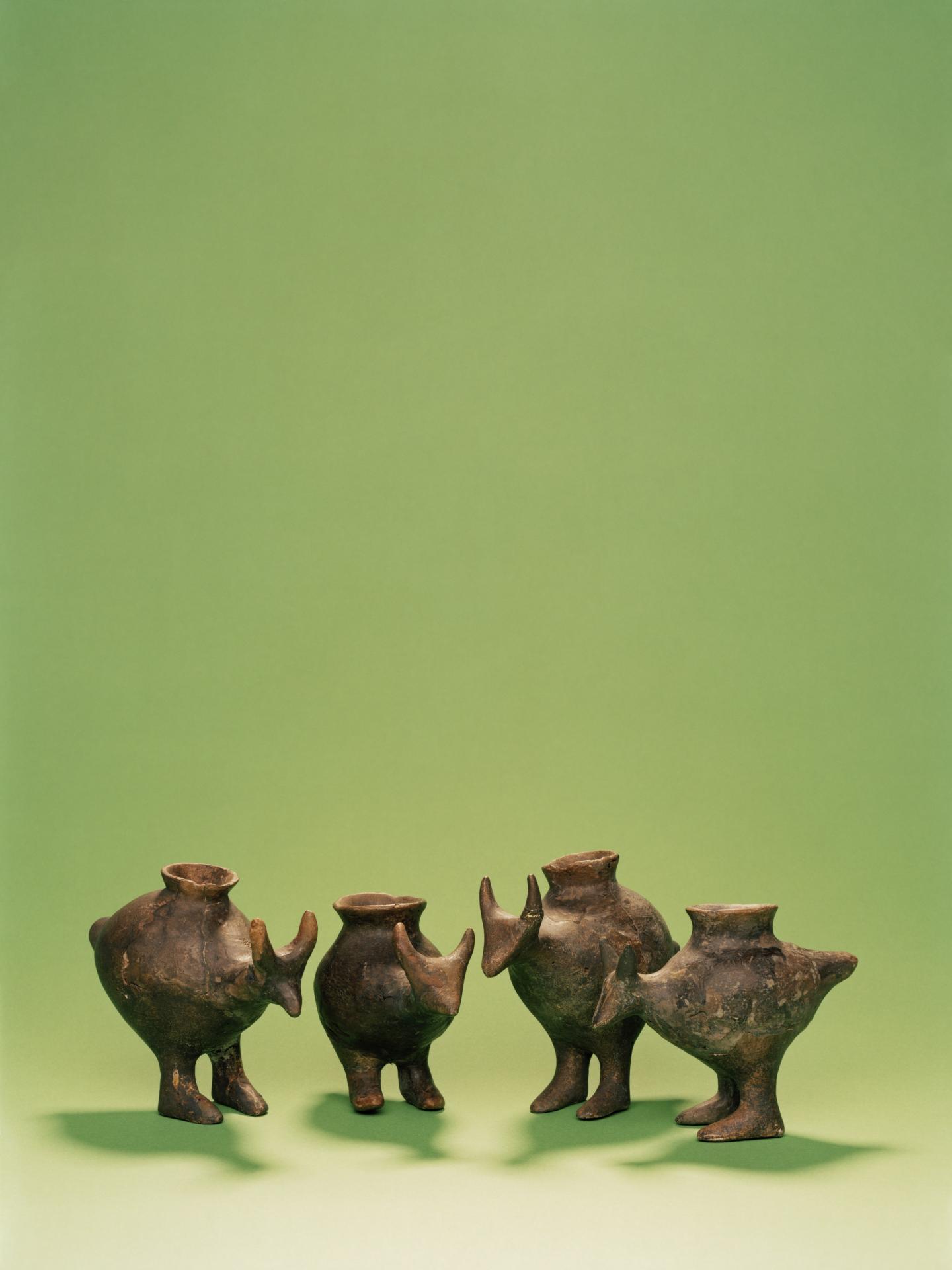Infant feeding vessels made of clay first appear in Europe in the Neolithic and became more commonplace throughout the Bronze and Iron Ages. The vessels are small enough to fit in a baby's hands, have a spout, and sometimes even feet and are shaped like imaginary animals.
Like all bottles, they could also have been used to feed sick people so whether or not they were used for infants has been a point of contention. Researchers selected three examples found in child graves in Bavaria. These were small (5 - 10 cm across) with an extremely narrow spout.

Late Bronze Age feeding vessels from Vösendorf, Austria. Credit: Enver-Hirsch Wien Museum
They used the chemical and isotopic approach to identify and quantify the food residues found within the vessels. Their findings showed that the bottles contained ruminant milk from domesticated cattle, sheep or goat. The presence of these three obviously specialized vessels in child graves combined with the chemical evidence confirms that these vessels were used to feed animal milk to babies either in the place of human milk and/or during weaning onto supplementary foods.
Prior to this study, the only evidence for weaning came from isotopic analysis of infant skeletons, but this could only give rough guidelines of when children were weaned, not what they were eating/drinking. The study thus provides important information on breastfeeding and weaning practices, and infant and maternal health, in prehistory.
This is the first study that has applied this direct method of identification of weaning foods to infants in the past and opens the way for investigations of feeding vessels from other ancient cultures worldwide.





Comments